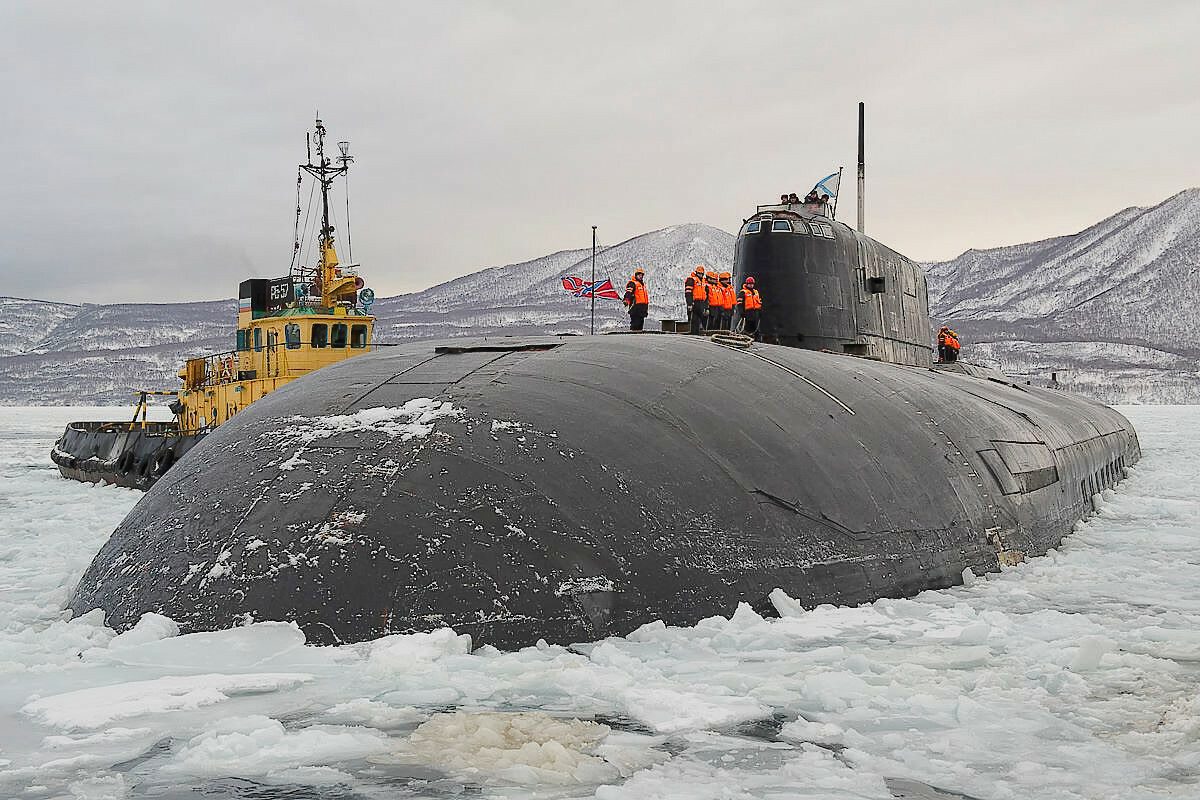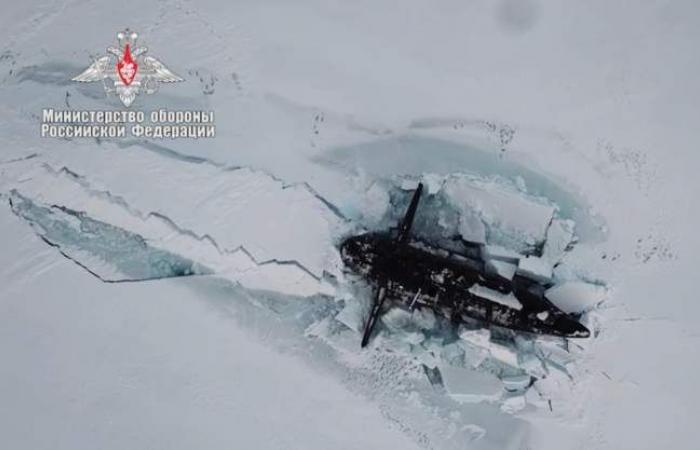Russia’s Northern Fleet Nuclear Submarine ‘Sharpening the Fang’ in the Artic
The Northern Fleet of the Russian Navy stands as one of the key components in the maritime defense of the nation, featuring among its primary assets nuclear-powered submarines equipped with intercontinental ballistic missiles.
(DEFENCE SECURITY ASIA) – Acknowledging the Arctic is a crucial point of defense, the Russian Navy has directed its Northern Fleet to initiate underwater navigation training beneath the thick ice layers in the Arctic for its nuclear-powered submarine crews.
Intensive theoretical and practical training, characterized as one of the most critical tasks, will be undertaken by the nuclear submarine crews under the Northern Fleet of the Russian Navy, starting this year.
The exercises aim to familiarize the nuclear submarine crews with the unique environmental conditions in the Arctic, including ice thickness, ice drift trends, and the impact of weather conditions on ice formation.
After acclimating to the Arctic environment, the nuclear submarine crews will proceed to conduct navigation exercises while submerged under the water and ice in the area.
According to reports from defense experts in Russian media, operating submarines under the thick ice layers in the Arctic poses significant physical and mental challenges for submarine crews.
These exercises are instrumental in preparing the involved submarine crews to face demanding environmental conditions and prolonged mission durations.

The Northern Fleet of the Russian Navy is a critical component of the country’s maritime defense, with nuclear-powered submarines being among its primary assets.
Notable nuclear-powered submarines under the Northern Fleet include the Borei-class submarines named Yury Dolgorukiy, Alexander Nevsky, Vladimir Monomakh, and Knyaz Vladimir.
In addition to Borei-class submarines, the Northern Fleet of the Russian Navy also deploys Delta IV-class submarines equipped with ballistic missiles such as Tula, Bryansk, Karelia, Novomoskovsk, Verkhoturye, and Ekaterinburg.
The Northern Fleet of the Russian Navy also possesses two Oscar II-class submarines carrying nuclear-armed cruise missiles, namely Orel and Smolensk, along with Sierra II-class submarines and a Yasen-class submarine, Severodvinsk.
A total of six Akula-class nuclear-powered submarines, including Pantera, Gepard, Vepr, Tigr, Volk, and Leopard, are stationed in the Northern Fleet of the Russian Navy.
Overall, the fleet comprises 21 nuclear-powered submarines of various classes.

The Arctic region holds high strategic importance for Russia.
Firstly, it serves as a natural buffer zone due to its challenging environment, making it difficult for anyone to stay in the area for an extended period, thus providing a level of defense against potential attacks on Russia.
Additionally, the Arctic is the home base for a significant portion of Russia’s nuclear capabilities, with the Northern Fleet of the Russian Navy stationed in the Arctic.
Russia’s nuclear-powered submarines have the capability to launch intercontinental missiles from areas that are hard to detect and navigate in the Arctic, further enhancing the strategic value of the region for Russia’s defense planners.
The Arctic also gives Russia a crucial and strategic position to monitor and control the Northern Sea Route (NSR), a maritime route that is becoming increasingly important due to climate change and the melting of ice in the Arctic.
Mastering the NSR provides economic and strategic benefits to those who control it. — DSA
CLICK FOR DEFENCE SECURITY ASIA APPS


Comments are closed.